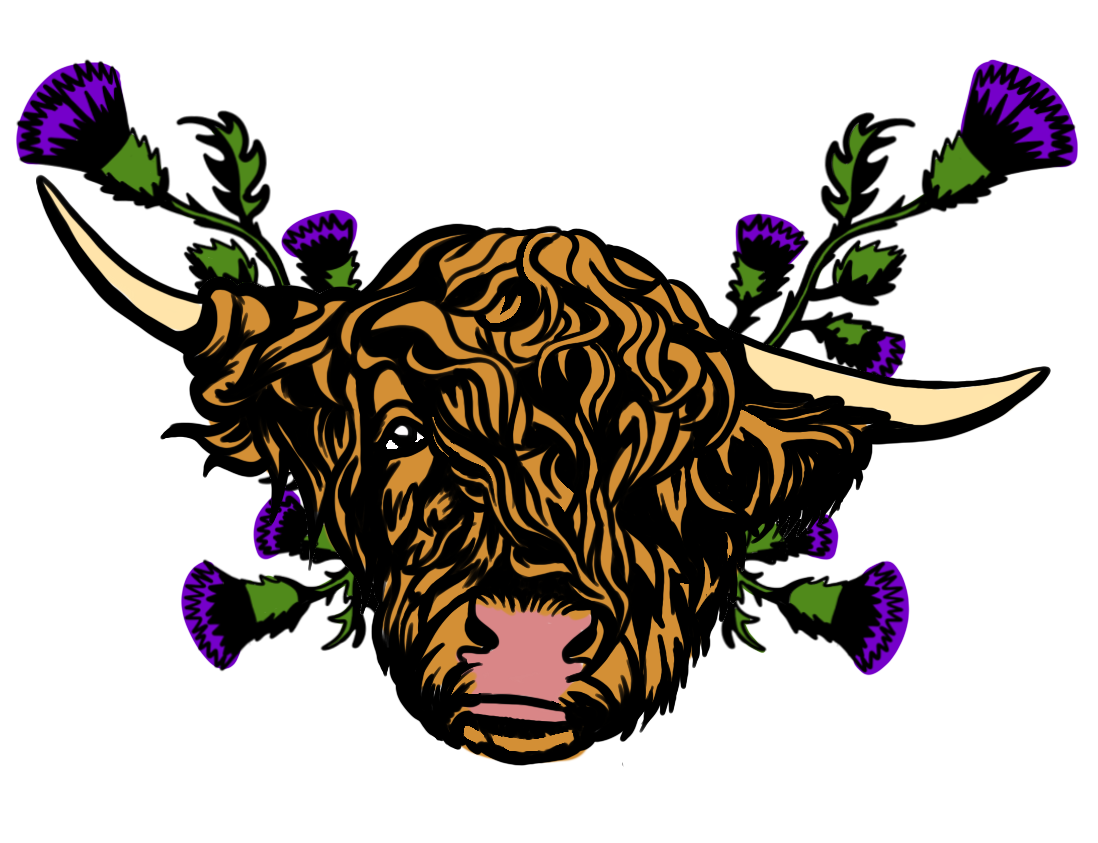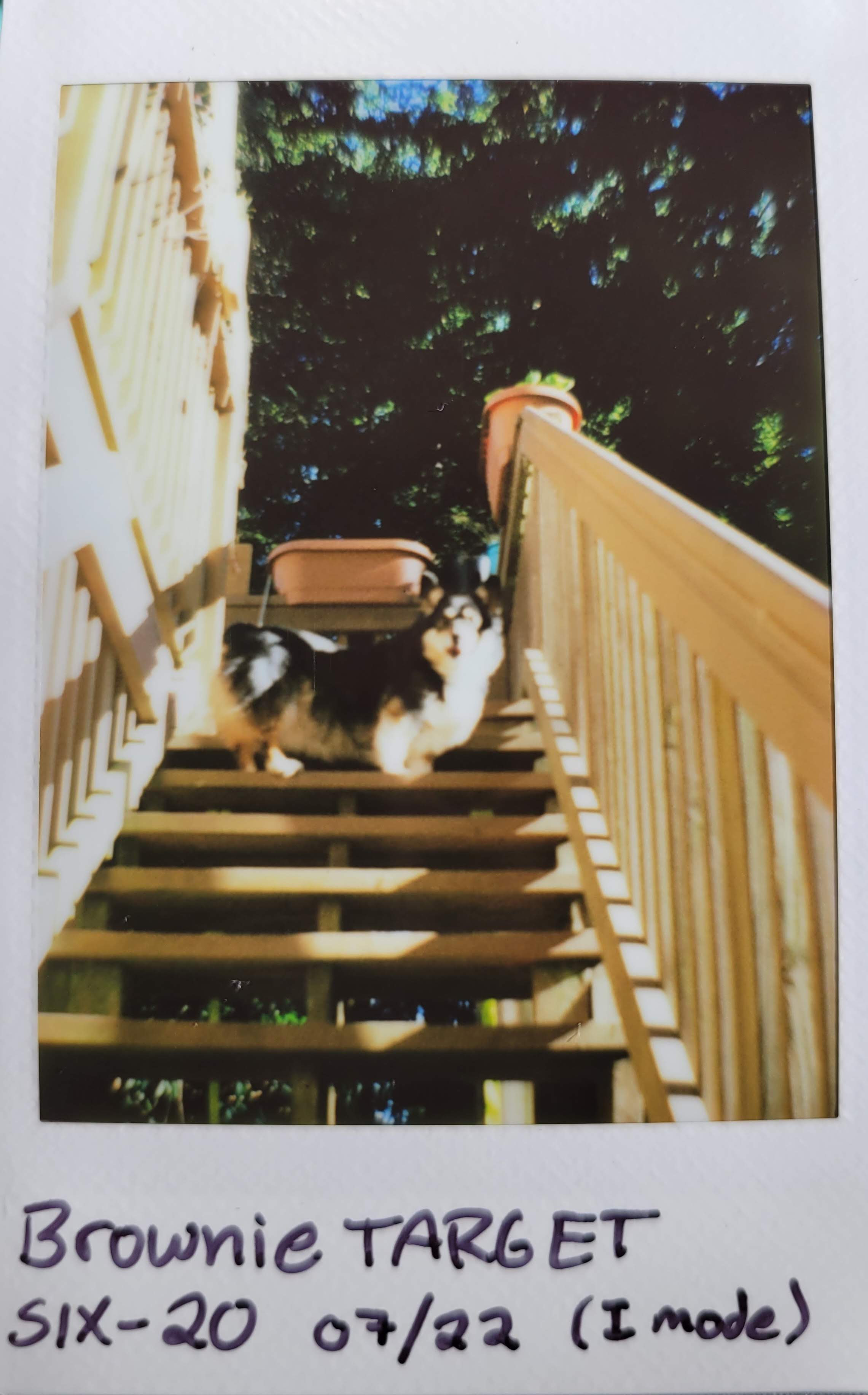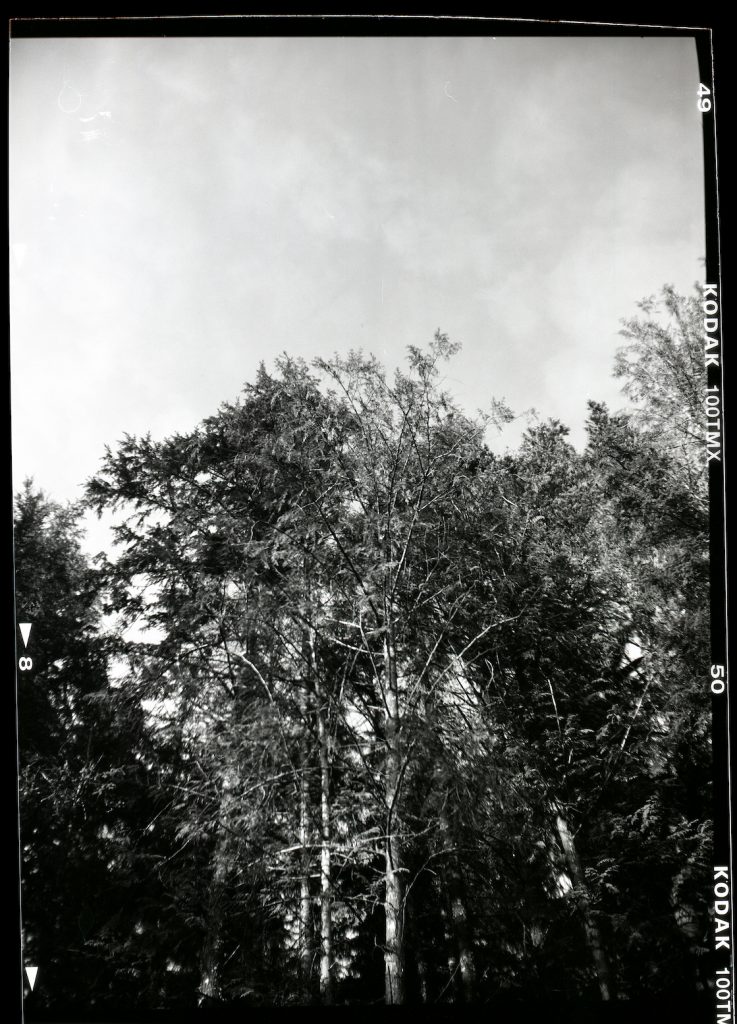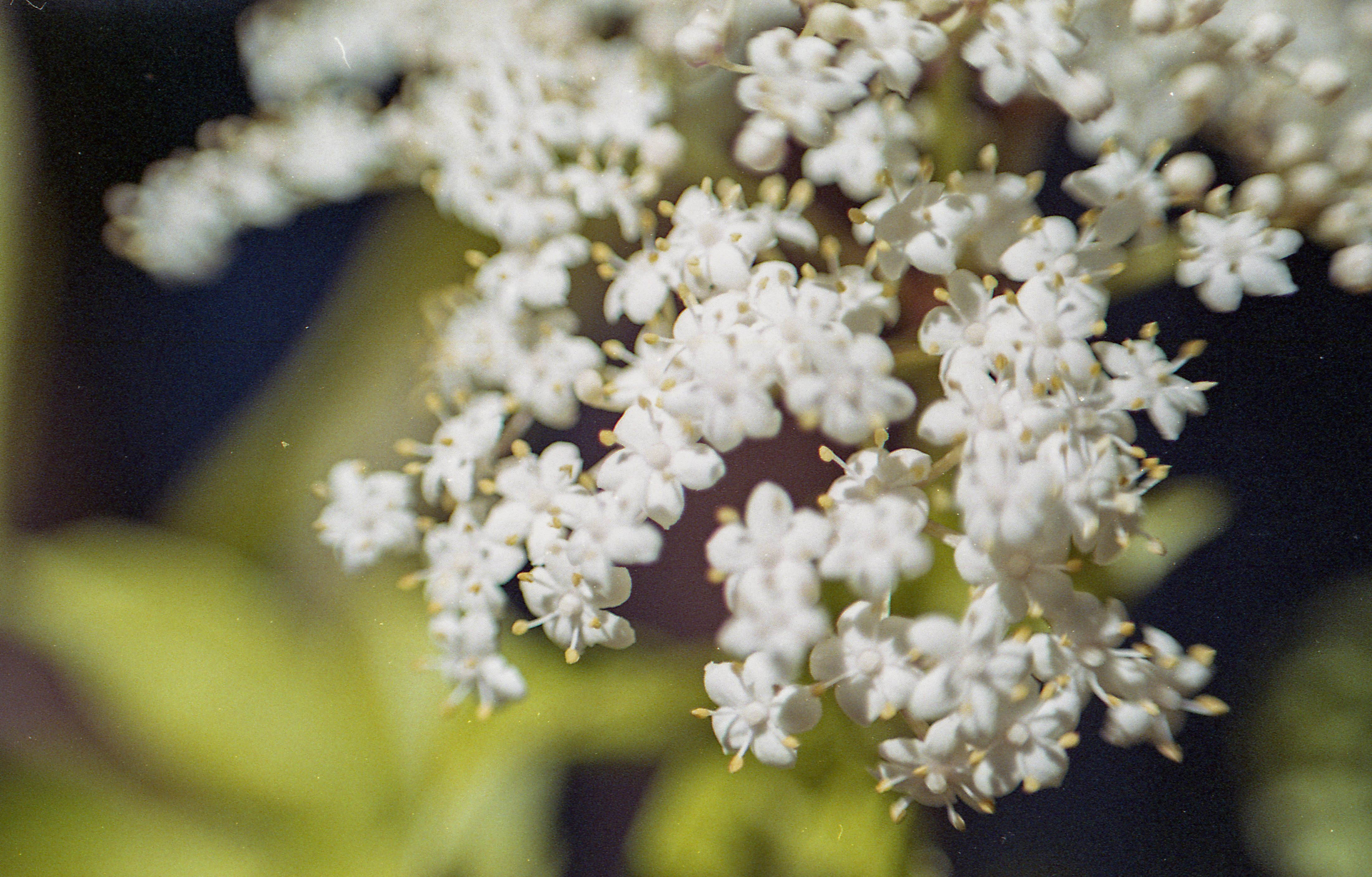Kodak Brownie Box
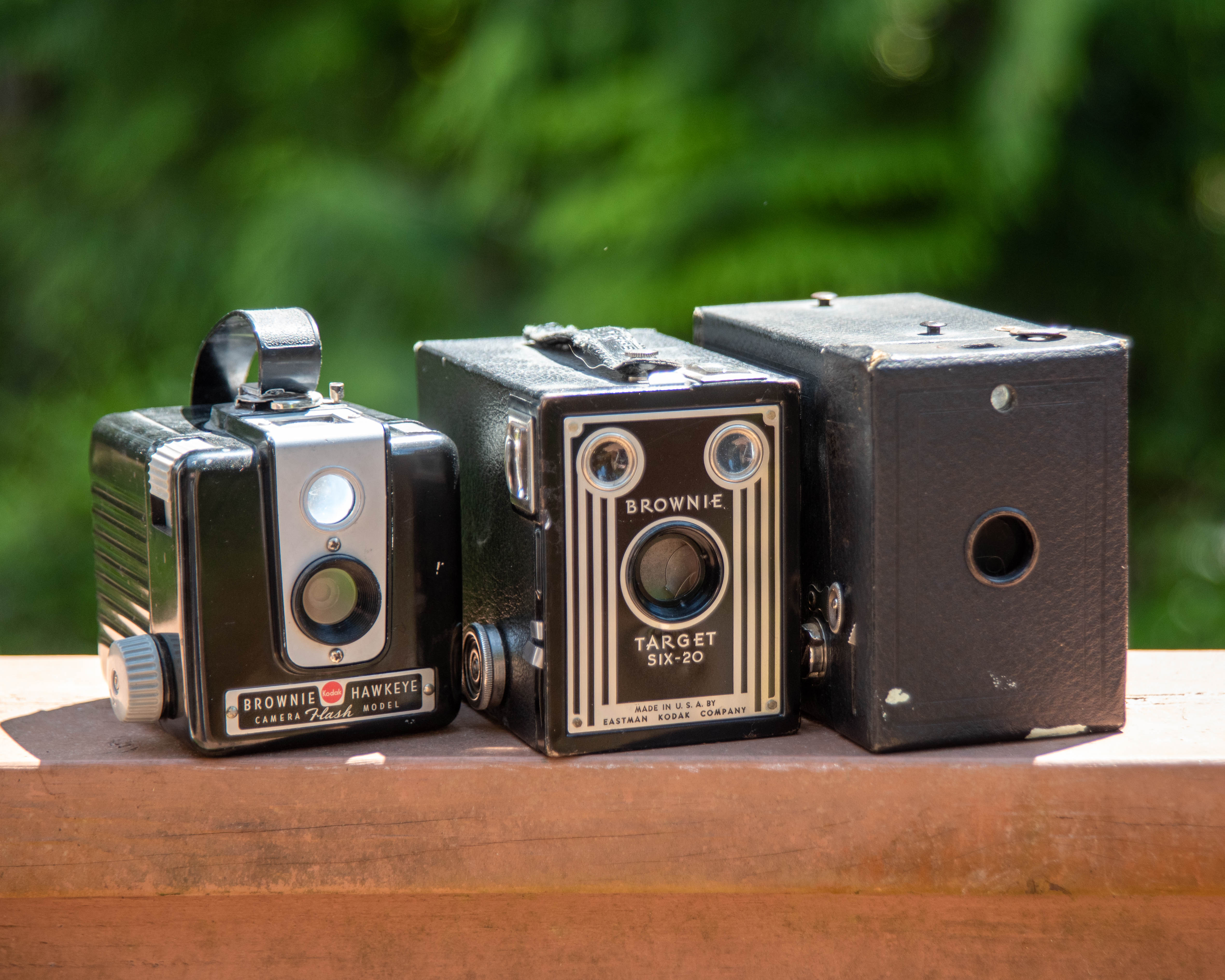
These cameras are absolute classics! This was the beginning, my friends. The beginning of amateur photography and the joy of home-made art and memories. This was what my great-grandparents could go out and buy as a fun experiment for the family that wouldn’t drive them deep in to debt or simply live on as a dream. This was the dream!
Box cameras are little devices of magic. They are the most basic way one can build a mechanical and composable camera. You push a simple tab to get the shutter to function and you focus completely by guessing. There is one focal distance and it is 6ft to infinity by my testing.
Model 2 (?)
The oldest one I have is from about 1916, and takes glorious and still-produced 120 film. It is the plain cardboard of the family, without the art deco face, and it is also the simplest. It has no glass lens and only one function. Push the silver tab down to push the shutter open and closed for about a 1/60 second exposure. Then you wind the film with the knob; and when you want to take another picture, you pull that tab up. That’s right, up takes a picture and down takes a picture. There is nothing complicated about that.
The model I have has only one viewfinder, though, and I have not been able to find out exactly which model that makes it. Clues on the outside and inside only tell me that it was made in Rochester, NY, USA by Eastman Kodak company and that it was patented in 1916, which leads me to believe that it is a Model 2 of some nature, but I haven’t seen one like it in any reference source I’ve discovered. So, while you can take pictures vertically or horizontally, the viewfinder does not give you easy access to take a horizontal photo as the six-20 does.
Target Six-20
The younger of the two, the one with the pretty faceplate, is from the late 1940s. It has two shutter modes: “hold the shutter open because it’s rather shady or dark” (bulb mode) and “use the spring to make the shutter go quickly because the sun is out” (about 1/60).
But, also there are two aperture modes. Pull a tab up for f/16 and leave it down for f/11.
That’s 4 possible shooting modes!
By the 1940s, Kodak decided 120 film was old hat though, so this camera (as you can guess by the name), takes 620 film. This film is no longer made, but a pro tip is that the film itself is the same as 120 film, it is the spool size that is different. If you can find 620 spools, you can go in to the dark and wrap some 120 film around it. I have done this for my Kodak Vigilant with great success.
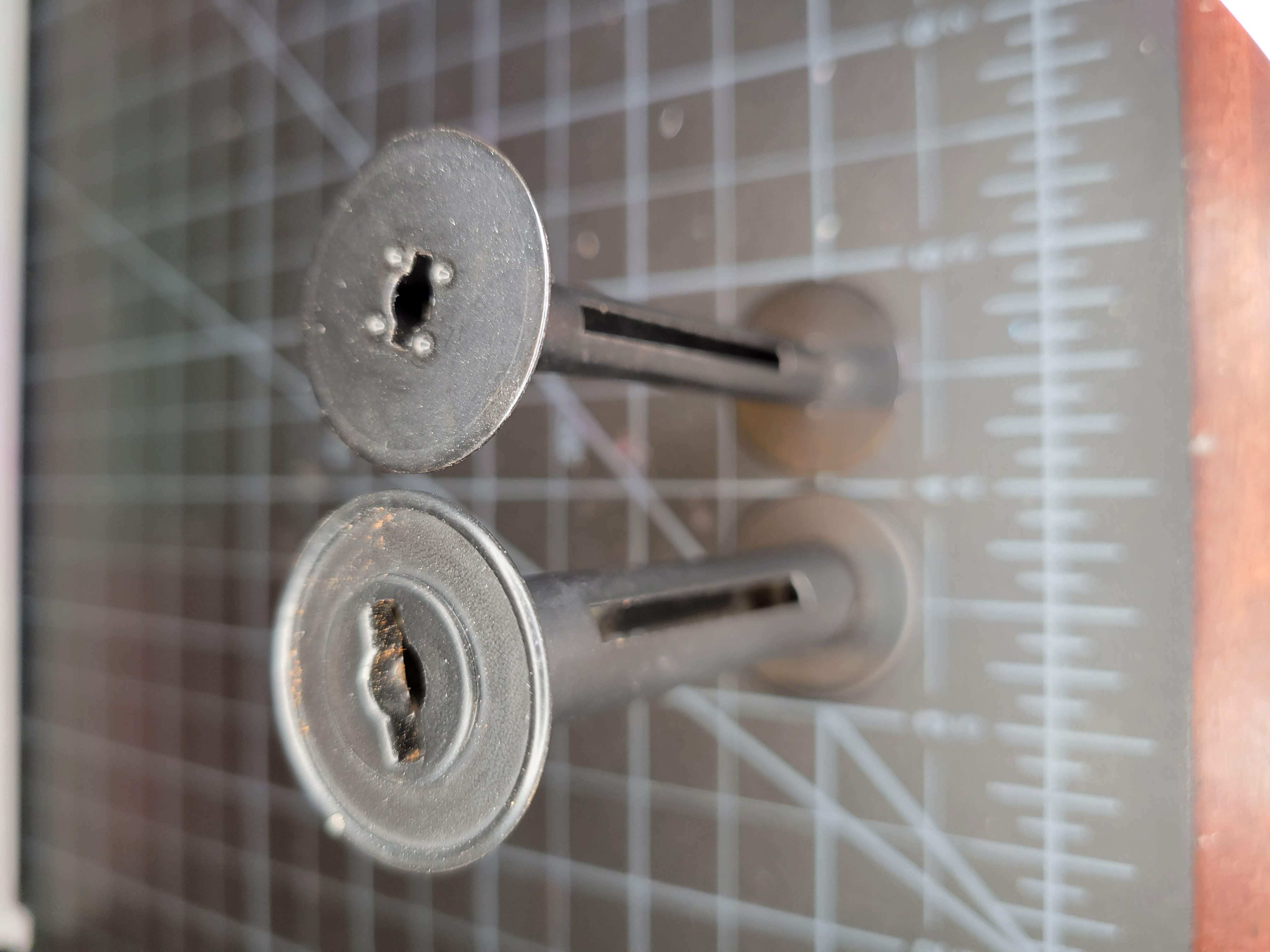
I have tested this camera with some fujifilm instax film, and the focal distance is surprising. It seems to be more like 12 feet at the larger aperture. The smaller aperture I will need to try.
Hawkeye
The Hawkeye Flash, from the 1950s, is the youngest of my Kodak Brownie cameras. And one that I have not done much with yet. Like the Model 2, it only has one shutter speed (no bulb mode) but the aperture can be changed and, as the “flash” in its title may suggest, it could be used with a flash. I would be interested in trying that, but I have precious few flashbulbs.
Unlike the other two, this one created a square format photograph rather than a rectangular one. I am a sucker for a square format so I look forward to trying it out. Since she’s too small to test with instax film and she takes 620 instead of 120, I’ll have to respool a roll.
